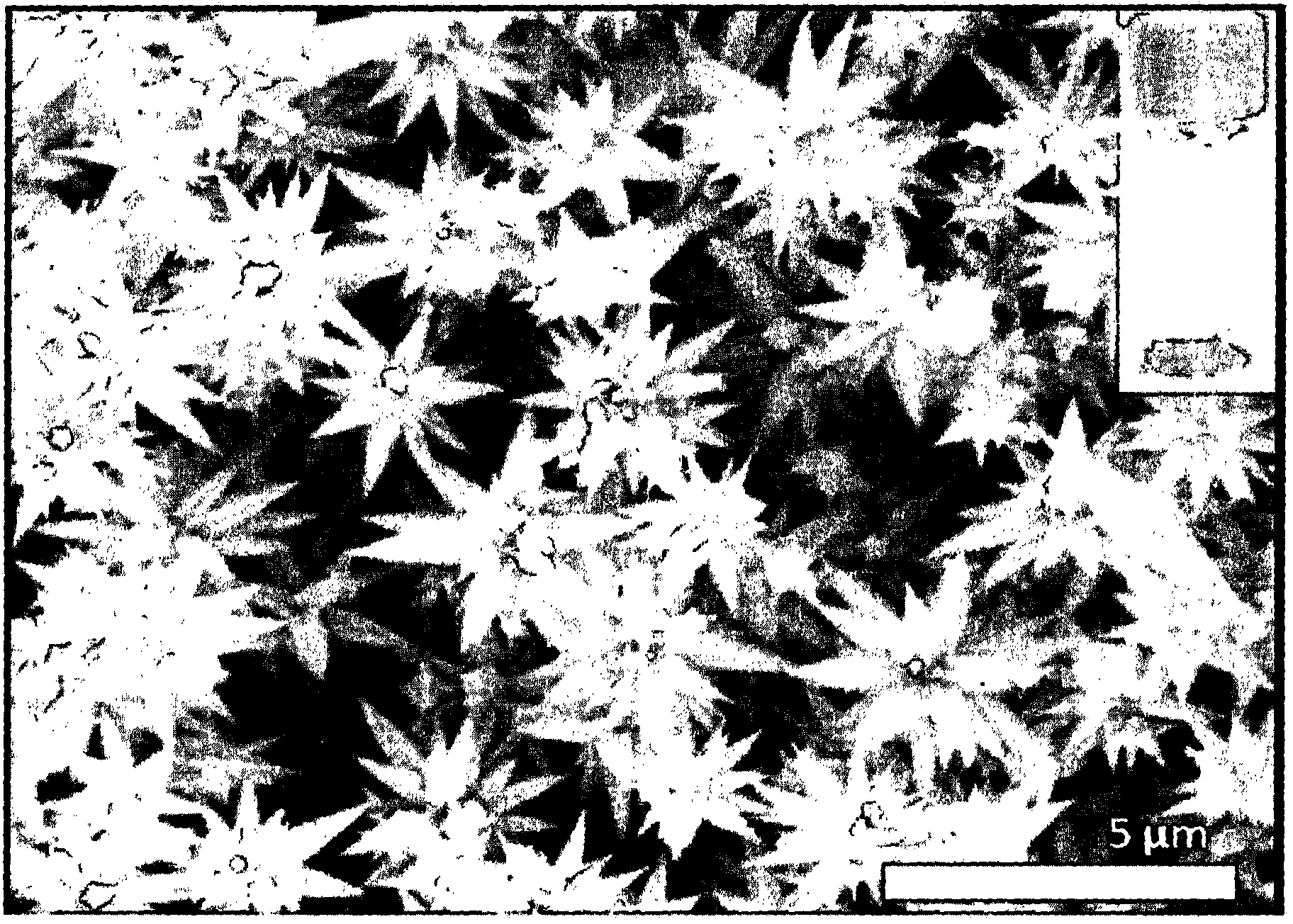Visual detection of mercury ions
A technology of heavy metal ions and quantum clusters, applied in measuring devices, analysis using chemical indicators, nanotechnology for materials and surface science, etc., can solve the problems of not having a unique shape, finding and distinguishing particles, etc.
- Summary
- Abstract
- Description
- Claims
- Application Information
AI Technical Summary
Problems solved by technology
Method used
Image
Examples
Embodiment 1
[0029] Example 1: Synthesis of Au / oligoaniline nanoparticles
[0030] Citric acid (25 mg) was dissolved in 35 mL of distilled water and maintained at 80°C. To this solution was added 1 mL of 25 mmol / L HAuCl 4 . After the color changed from light yellow to pink, add 100 µL of distilled aniline followed by 500 µL of 25 mmol / L HAuCl 4 , and continue heating for another 5 minutes. The mixture was cooled to room temperature. The mixture was maintained at room temperature for 5 hours and then centrifuged at 4000 rpm. The light pink supernatant containing Au / oligoaniline nanoparticles was collected and used for further reactions. Au / oligoaniline nanoparticles are raspberry-like aggregates of small nanoparticles (~3 nm in diameter), forming 75-100 nm structures, which are embedded in an oligoaniline matrix.
Embodiment 2
[0031] Example 2: Synthesis of silica-coated gold mesoflowers
[0032] Add 335 μL of HAuCl sequentially to 20 mL of CTAB solution (100 mM) in a beaker 4 (25mM), 125μL of AgNO 3 (10mM) and 135μL of ascorbic acid (100mM). To this solution was added 2 mL of Au / oligoaniline nanoparticles from Example 1, and the mixture was maintained at 80° C. for 1 hour. It was then cooled to room temperature, and the mixture was centrifuged at 3500 rpm for 4 minutes. The residue of Mesoflower aureus was washed three times with water to remove excess CTAB and other unwanted materials. Disperse Aurora mesophila in isopropanol (2 mg in 10 mL). A solution of tetraethylorthosilicate TEOS (120 μL) and ammonia (1.5 mL) was added with rapid stirring. The mixture was centrifuged and the supernatant was removed in order to prevent self-nucleation of the silica particles. The residue was cleaned several times by centrifugation and redispersed in water / isopropanol. This produces a homogeneous coating...
Embodiment 3
[0033] Example 3: Ag bound in bovine serum albumin 15 Synthesis of Quantum Clusters
[0034] To bovine serum albumin powder (250 mg in 5 mL) in distilled water was added silver nitrate solution (5 mL, 10 mM) with vigorous stirring at room temperature. Add about 0.3 mL of NaOH (1M) followed by 10 mM NaBH dropwise 4 solution until the solution changes from colorless to reddish-brown (approximately 120 μL); indicating the formation of Ag bound in bovine serum albumin 15 quantum clusters.
PUM
| Property | Measurement | Unit |
|---|---|---|
| Size | aaaaa | aaaaa |
| Size | aaaaa | aaaaa |
| Diameter | aaaaa | aaaaa |
Abstract
Description
Claims
Application Information
 Login to View More
Login to View More - R&D
- Intellectual Property
- Life Sciences
- Materials
- Tech Scout
- Unparalleled Data Quality
- Higher Quality Content
- 60% Fewer Hallucinations
Browse by: Latest US Patents, China's latest patents, Technical Efficacy Thesaurus, Application Domain, Technology Topic, Popular Technical Reports.
© 2025 PatSnap. All rights reserved.Legal|Privacy policy|Modern Slavery Act Transparency Statement|Sitemap|About US| Contact US: help@patsnap.com

